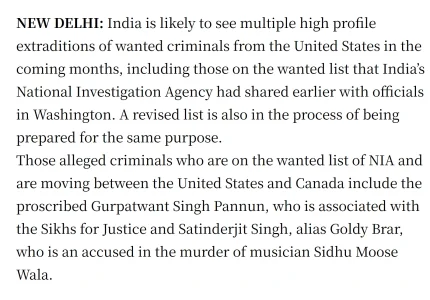- Joined
- Jul 1, 2024
- Messages
- 2,044
- Likes
- 12,235
Trade war 2.0 loading!

 economictimes.indiatimes.com
economictimes.indiatimes.com

 economictimes.indiatimes.com
economictimes.indiatimes.com
Tldr: Modi willing to yield certain concessions on Harley Davidson bikes - nothing on teslashit! Orange man goes on a full meltdown and Elmo backs him up - thinks bullying him into manufacturing in India is 'totally unfair'.
Elmo is playing games with gormint. He wants to export cars at 5-10% duties. All these 'media leaks' (based on unnamed sources) claiming they would launch $ 25k cars do not mean a thing. He is still bargaining - all this is pressure politics.
Reason why I kept saying that Trump 2.0 would be catastrophic for us.

India will not be spared from reciprocal tariffs, says Trump; shares PM Modi reaction
Donald Trump reiterated his stance on reciprocal tariffs, telling PM Modi that India will face equal U.S. tariffs on its exports. He emphasized that no country can argue with his approach. Musk confirmed Indias 100% auto import duty.

Trump thinks it would be 'very unfair' if Elon Musk opened up a Tesla factory in India
Donald Trump criticized Teslas potential factory in India as “very unfair” during an interview with Elon Musk, citing high import tariffs. Musk confirmed India's 100% tariff on U.S. auto imports. Tesla has begun hiring in India, raising speculation about its market entry.
Tldr: Modi willing to yield certain concessions on Harley Davidson bikes - nothing on teslashit! Orange man goes on a full meltdown and Elmo backs him up - thinks bullying him into manufacturing in India is 'totally unfair'.
Elmo is playing games with gormint. He wants to export cars at 5-10% duties. All these 'media leaks' (based on unnamed sources) claiming they would launch $ 25k cars do not mean a thing. He is still bargaining - all this is pressure politics.
Reason why I kept saying that Trump 2.0 would be catastrophic for us.






